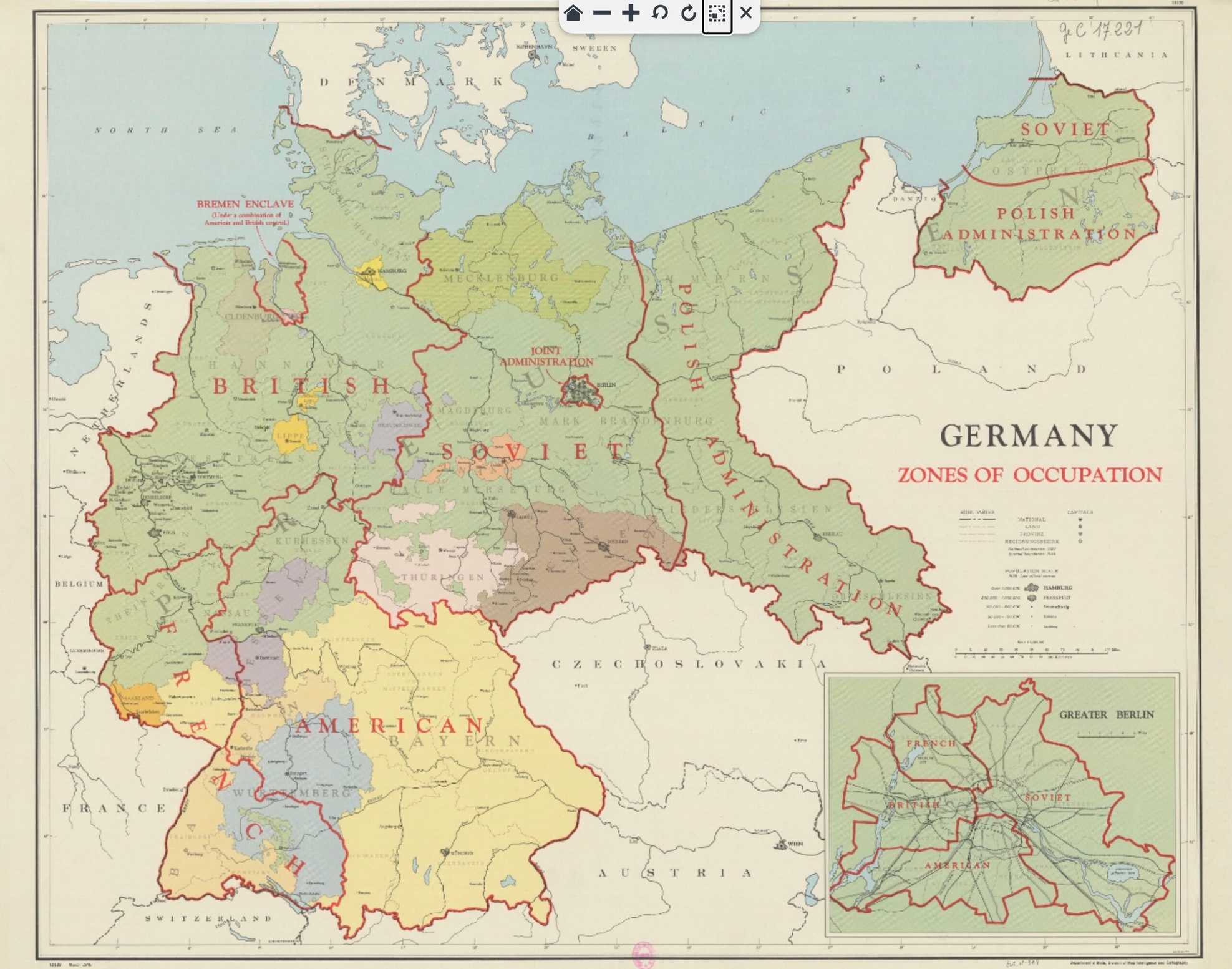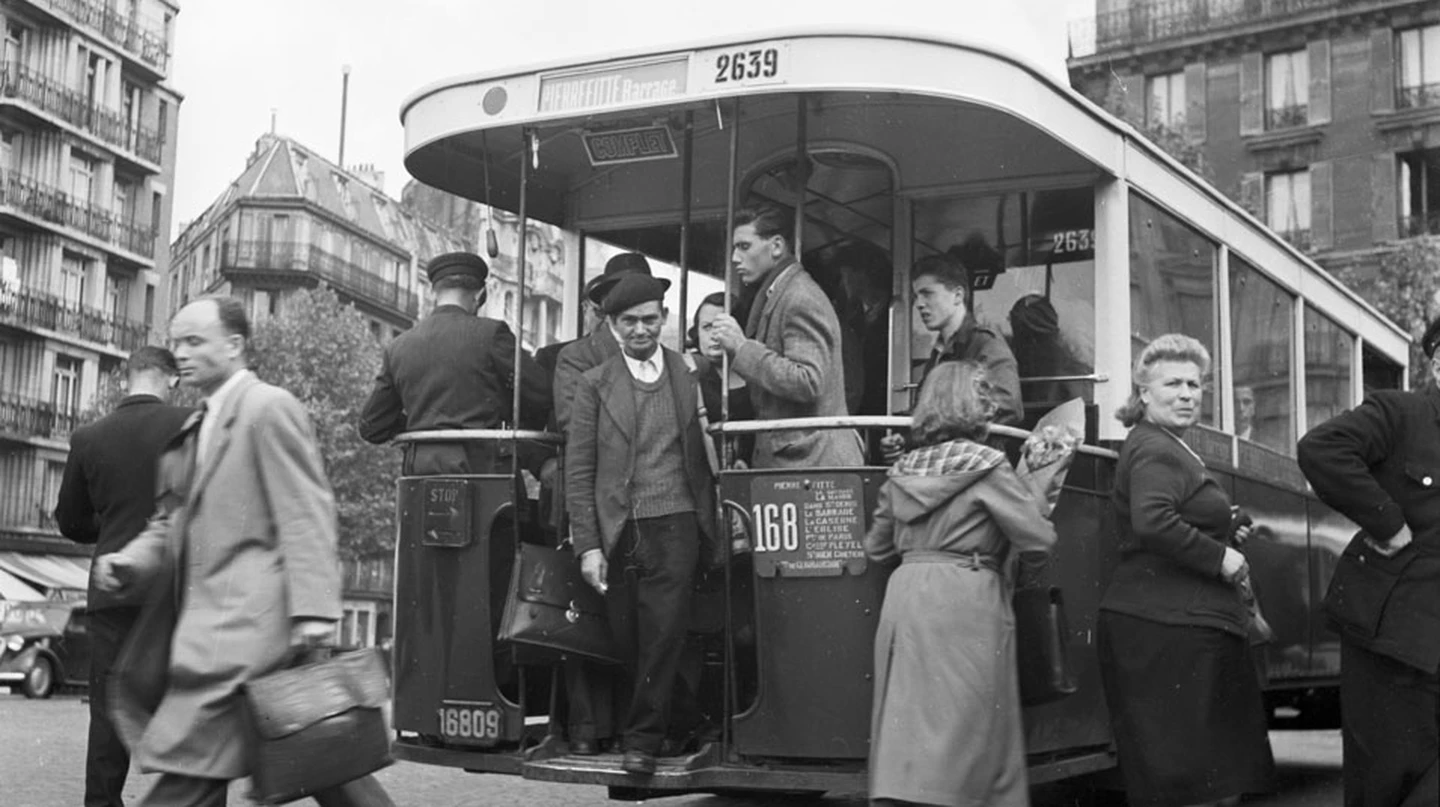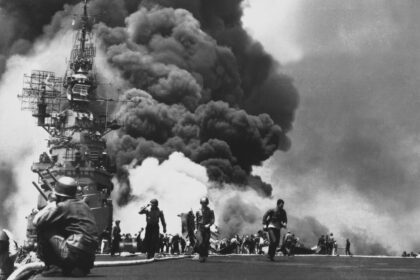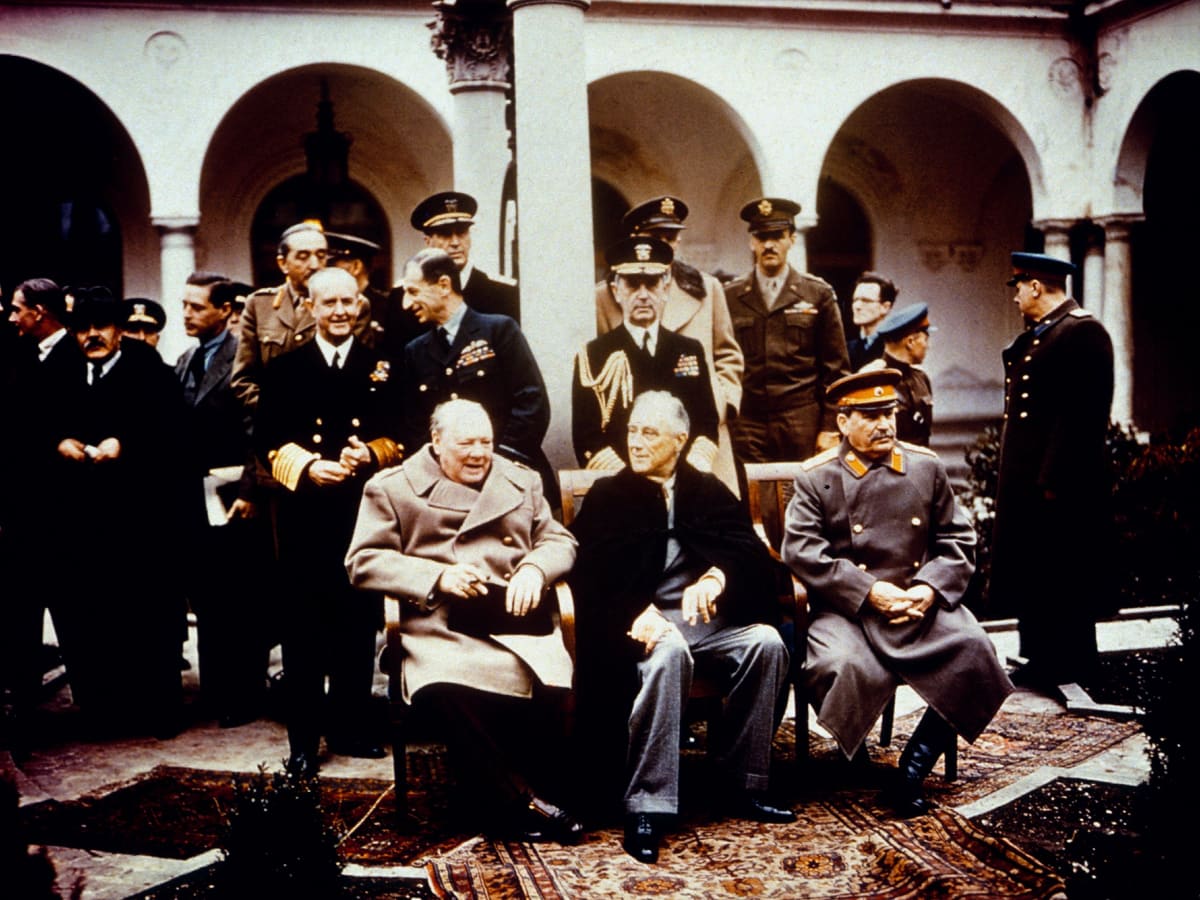On July 17, 1945, the Potsdam Conference commenced near Berlin. While Japan continued to engage in combat, the Allied powers convened in this German town to determine the fate of their enemies. Three heads of state led the discussions until August 2, 1945: Winston Churchill, the Prime Minister of the United Kingdom; Harry Truman, the President of the United States; and Joseph Stalin, the General Secretary of the Union of Soviet Socialist Republics (USSR). The occupation and denazification of Germany were decided upon in Potsdam, while an ultimatum was issued to Japan to definitively end World War II.
As the February 1945 conference at Yalta (Yalta Conference) progressed, Stalin seemed to be in control. While Roosevelt was relatively weak, he had already committed to several Soviet positions, and the Red Army seemed to be winning the race for Berlin. Churchill had serious concerns, but the American president held out hope that the Soviet state would eventually become more democratic. In addition, Roosevelt expected the future United Nations to limit any communist expansionism that could occur. His successor, Truman, would attempt to control the resulting compromises at Potsdam due to these events.
What is the Historical Background of the Potsdam Conference?
In the middle of July 1945, the Allied powers were on the brink of triumph in World War II. By this time, Germany, particularly the Third Reich, had already surrendered on May 8, 1945, with Adolf Hitler having taken his own life a few days earlier in his bunker. Japan, on the other hand, was still engaged in the conflict, persistently defending its territories. It wasn’t until September 2, 1945, following the dropping of atomic bombs on Hiroshima and Nagasaki, that Japan finally surrendered. The Potsdam Conference ensued, building upon the Teheran Conference held in 1943 (which played a crucial role in organizing the Allied landings in 1944) and the Yalta Conference in February 1945, along with the London Agreement signed on June 26, 1945. The objective of the Yalta conference was to expedite the conclusion of World War II and shape the future of Europe in the aftermath of the Third Reich’s defeat. These conferences aimed to ensure the stability of the newly established global order.
Organizing the Post-War World
The Big Three’s first order of business at Potsdam was to discuss Germany’s potential postwar trajectory. The immediate goal for the Allies was to demilitarize Germany, which entailed destroying its military-industrial complex if necessary. Poland benefited greatly from the division of Austria into four occupation zones (American, British, French, and Soviet), which reduced Austria’s western boundary along the Oder Neisse line (which the Soviet Union had amputated from its eastern part). Large-scale migrations of people also occurred as a result of these territorial shifts; in particular, 11 million Germans were forced to leave the eastern areas.
The Nuremberg Trials were the apex of the Big Three’s commitment to a forceful campaign of denazification and the prosecution of war criminals inside the new Germany. Both the governmental and economic systems would be decentralized. In addition to disarmament, these four measures insured that the Allies would never again tolerate Germany as a military force.
The situation in Japan was also a key topic of discussion at the meeting. Though at war with the Western Allies since December 1941, the Empire of the Rising Sun held out hope that a negotiated end to the battle might be reached, particularly with the help of the then-neutral Soviets in Asia. The Japanese government was in the dark about Stalin’s decision to join the war on the side of the Americans at Yalta. To take on the wealthy regions of Manchuria and northern Korea, the Soviet Union assembled a formidable military force in the Soviet Far East.
The possibility was raising alarms in the nation’s capital. The Americans planned to maintain control of East Asia even if the defeat of Japan was certain (particularly in light of potential further atomic strikes). In particular, they were worried that Moscow might intervene on behalf of the Chinese Communists, whose ceasefire with Chiang Kai-shek’s Nationalists was tenuous at best.
However, on July 26, the Big Three sent Japan an ultimatum demanding unconditional surrender or immediate annihilation. Despite being left out of the ultimatum’s language, the atomic bomb hangs heavy over ties between the USSR and the USA. Stalin would soon have to catch up with the Americans.
Who Attended the Potsdam Conference?
The Potsdam conference saw the participation of only three invited signatories who agreed to attend.
- Harry Truman, the Democratic successor to Franklin D. Roosevelt, represented the United States during the conference.
- Joseph Stalin, the Soviet statesman who had been in control of the federation since 1920, acted as the representative of the USSR.
- Lastly, Winston Churchill, the Prime Minister of the United Kingdom since May 1940 and a member of the Conservative Party, represented his country.
Stalin emerged triumphant at the Potsdam conference, advocating for the interests of the USSR and emphasizing the immense sacrifice of 20 million soldiers who had perished in the fight against Nazi Germany. France, which was no longer considered a “great nation,” was not included in the conference but received updates on the proceedings and decisions. General de Gaulle expressed his disappointment with this situation. It is worth noting that the Potsdam conference marked the sole meeting between Truman and Stalin. By 1946, the two nations had descended into the Cold War.
Where and When Did the Potsdam Conference Take Place?
The Potsdam Conference was held at Cecilienhof Castle, located southwest of Berlin. Princess Cecilie, the castle’s occupant, was compelled to flee due to the advancing Red Army, and the Soviet military government took over the premises. Despite the interior being designed by German architect Paul Troost, all belongings were removed to accommodate the Potsdam Conference. A round table was brought into the castle hall, where the three heads of state, Truman, Stalin, and Churchill, convened from July 17 to August 2, 1945. The Potsdam Agreement was officially signed on July 26, 1945. Originally, the conference was intended to be held in Berlin, but extensive bombing damage rendered it impractical.
What Decisions Were Taken Concerning Germany?
One of the initial decisions made was the separation of Germany and Austria, which constituted the German Reich, with the goal of restoring Austria’s independence. Both countries were divided into four zones of occupation. The USA, the UK, and the USSR all occupied different parts of Germany. France, on the other hand, was granted an occupation zone along its borders by the USA and the UK. Subsequently, in 1949, the Federal Republic of Germany (FRG) and the German Democratic Republic (GDR) were established. Poland was granted authority over the former German provinces bordering its territory. The focus shifted from defeating Nazism to preparing for the post-war era and the division of assets and territories. The BNF map below illustrates the zones of occupation, with a zoom on Berlin, which itself was divided into four occupation zones.

En ce qui concerne le montant des réparations que l’Allemagne devra payer, les Etats-Unis et le Royaume-Uni sont en désaccord avec Staline dont la demande est jugée excessive. Un compromis est finalement trouvé. Cette question sera abordée lors de la Conférence des ministres des Affaires étrangères. En attendant, il est convenu que les Soviétiques peuvent prélever ce qu’ils souhaitent dans leur zone d’occupation.
Among the other decisions made at the Potsdam Conference, there were the “five Ds”: disarmament or demilitarization, denazification (elimination of all elements related to Nazism), decartelization of German industries controlled by large corporations, democratization, and decentralization. Within the framework of denazification, the Nuremberg trials were organized from November 1945 to October 1946 to prosecute war criminals. They were accused of conspiracy, crimes against peace, war crimes, and crimes against humanity. The concept of “crimes against humanity” was a novel development. Twelve high-ranking Nazis were sentenced to hanging, and others received life imprisonment.
Regarding the amount of reparations Germany would have to pay, the United States and the United Kingdom disagreed with Stalin’s excessive demands. Eventually, a compromise was reached. This issue would be further addressed during the Conference of Foreign Ministers. In the meantime, it was agreed that the Soviets could extract whatever they deemed necessary from their occupation zone.
The decisions made, particularly the creation of occupation zones, led to significant population displacements. Germans and Poles were expelled from the east, German populations were expelled from certain territories such as Silesia (a historical region spanning the Oder Basin, Poland, Germany, and the Czech Republic), the Sudetenland, and Transylvania.
What Decisions Have Been Taken Regarding Japan?
On July 26, 1945, an ultimatum was presented to the Empire of Japan. It demanded the Japanese government’s surrender, warning of “swift and complete destruction” if they refused. This ultimatum was delivered during the Potsdam Conference, where Truman informed Stalin about the existence of a new weapon: the atomic bomb. On July 29, 1945, Japan announced its disregard for the new Allied ultimatum. In response, the first atomic bomb was dropped on Hiroshima on August 6 of the same year.
Following the Japanese government’s continued refusal to surrender, a second bomb was dropped on Nagasaki on August 9. Concurrently, on August 8, the USSR declared war on Japan, in accordance with the agreement reached at the Yalta Conference in February. Emperor Hirohito of Japan accepted the terms of the Potsdam Accords on August 15, 1945. The official Japanese surrender was signed a few weeks later, on September 2, aboard the USS Missouri in Tokyo Bay.
What Does It Mean For Other Nations?
At the Potsdam Conference, the decisions made had repercussions for France, Poland, and Italy, as well as other members of the Axis.
Regarding Poland, on July 5, 1945, the United States and the United Kingdom recognized the pro-Communist provisional government. The conference also established the temporary border between Germany and Poland, known as the Oder-Neisse line.
In the case of French Indochina, the Allied forces entrusted the restoration of order to the United Kingdom and China without consulting France. Despite being under Japanese control since March 1945, France managed to negotiate its reinvestment in Indochina. However, Vietnam’s desire for independence led to the outbreak of the Indochina War in 1946.
Benito Mussolini’s Italy faced sanctions and lost its African colonies. Eritrea and Italian Somalia came under British administration, although Somalia regained its Italian identity between 1950 and 1960 under a United Nations mandate. Before gaining independence in 1951, the United Kingdom and France occupied Italian Libya. Albania regained its independence, and French territories that had been annexed during the war were returned to France.
Bibliography:
- Gormly, James L. From Potsdam to the Cold War: Big Three Diplomacy, 1945–1947. (Scholarly Resources, 1990)
- Lewkowicz, Nicolas, The German Question and the International Order, 1943-1948. Palgrave, 2010. ISBN 978-1349320356
- Mee, Charles L., Jr. Meeting at Potsdam. M. Evans & Company, 1975. ISBN 0871311674
- The Tehran, Yalta & Potsdam Conferences. Documents. Moscow: Progress Publishers. 1969.
- Harriman, W. Averell, and Elie Abel, Special Envoy to Churchill and Stalin, 1941-1946 (1975)






